#With all of the past week’s key sneaker headlines reviewed
Explore tagged Tumblr posts
Text
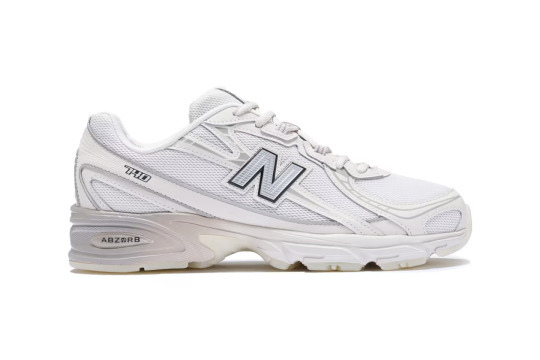
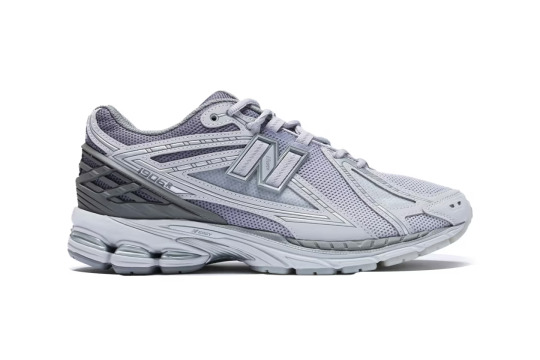


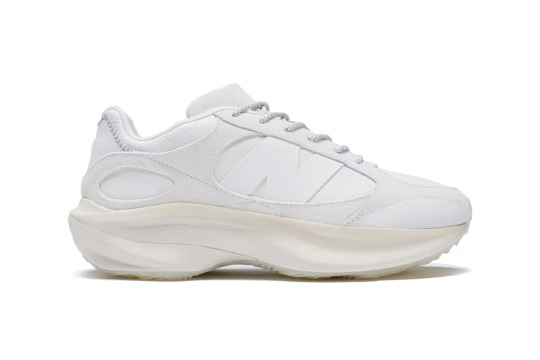
#Best Sneaker Releases December 2024 Week 5 Nike Book 1 “Sedona” New Balance “Lunar New Year” Collection Nike LeBron 22 “Mogul” New Balance 1#New Balance#It’s officially time to say goodbye to 2024. The year was chock-full of sneaker drops — exciting#wacky and everything in between — and we’re here with one final list to carry us into the new year. It’s clear that most brands are enjoyin#Jordan Brand and Reebok releases#however#there are still some pairs worth checking out. Before we get things started with the latest from Devin Booker and Nike Basketball#let’s first review what news hit the footwear space this past week.#Kicking things off#Nike shared its third annual review of the most popular SNKRS releases of 2024. Per usual#Travis Scott topped the list with another Air Jordan 1 Low OG collaboration#a surprise came in the form of Jordan Brand’s dominance. As for drops due to arrive in 2025#release details regarding Lil Yachty’s Nike Air Force 1 Low “Lucky Green/Mystic Red” and another rumored Supreme collaboration featuring th#providing a unique look into their design process.#As for Jordan Brand#the Air Jordan 4 is poised to have another big year as a first look at Nike SB’s “Navy” colorway of the AJ4 finally appeared after being ru#January’s return of the Air Jordan 3 “Black Cat” was teased by the Swoosh with official imagery.#The Lunar New Year is the subject of one of this week’s top drops but was also highlighted with new collections from both adidas Originals#embracing the Year of the Snake. Rounding out the news#MM6 Maison Margiela brought forth its new Sprinter silhouette — a nod to Nike’s original “Moon Shoes” from 1972.#With all of the past week’s key sneaker headlines reviewed#let’s dive right into which 10 drops you should consider picking up this week. Afterwards#you can avoid having to wait for future drop dates by hopping on HBX and shopping styles that are available today.#Nike Book 1 “Sedona”#Release Date: January 1#Release Price: $140 USD#Where to Buy: Nike#Why You Should Cop: Stepping into the new year#Devin Booker and Nike Basketball are continuing to outfit the star guard’s first signature shoe with unique colorways. Embracing the great#this “Sedona” iteration looks to the picturesque Arizona city for inspiration. Its upper sees a topographic pattern overlaid atop a red-ora
7 notes
·
View notes
Text
Agilenano - News: Four Lawsuits, Corporate "Bullying," and an Alleged Pattern of Rampant Copying: The History of Nike v
Skechers image: TFL In the $62.5 billion-plus global sneaker market, the competition is fierce, the costs associated with the intensive research and development that goes into designing and manufacturing footwear are high, and the revenues that can be generated from single styles collections can race past the $1 billion mark for standouts like Nike’s Flyknits or adidas’ Stan Smith and the Superstar models. This means that the stakes are high amongst the market’s key players, and the chance that litigation will come into play among them is even higher. Nike and adidas have long made headlines in connection with their history of legal battles, centering on their respective knitted technologies, for instance, which spawned an international battle beginning at the very same time as he London Olympics in 2012, and while there is likely no end in sight to the fights they wage against one another in their quest to outfit consumers across the globe, another rivalry has been spilling over into the courts: Nike versus Skechers. In the lawsuit that it filed against Skechers in a federal court in California in September, Nike told the judge that the case was not the first of its kind, just as it was “not the first time Skechers has infringed its intellectual property rights.” Accusing Skechers of copying a number of its sneaker designs and thereby, infringing two of its utility patents, counsel for Nike declared that the case is actually “the fourth in a series of lawsuits that Nike, and its subsidiary Converse Inc., have filed against Skechers asserting a range of intellectual property rights.” In filing suit against Skechers this fall, Nike has escalated another relatively recently-initiated fight against its Southern California-based rival, and added yet another matter to a larger – and clearly still growing – list of proceedings that Nike has said stem from Skechers’ larger pattern of allegedly “copying its competitors’ designs and using innovative technologies developed by others to gain market share instead of innovating its own designs and technologies.” In Skechers’ mind, Nike’s latest litigation was the latest attempt by the $150 billion-plus sportswear giant to “stifle competition” and “bully” its rivals. This is what Skechers asserted in an open letter that it posted to social media in the fall of 2019. A timeline of their respective lawsuits – and other legal proceedings – is as follows … October 2014 Nike-owned Converse sued Skechers (and 30 or so other companies, including New Balance, Walmart and Ralph Lauren, among others, in individual cases) in federal court in Brooklyn, New York – in which it sought injunctive relief and monetary damages – and in an International Trade Commission (“ITC”) proceeding, seeking an order barring the defendants from importing the allegedly infringing footwear into the U.S. In both sets of cases, Converse alleged that the more than 2 dozen companies, including Skechers, were “mass-producing, distributing or selling sneakers that knock off the look of [its] iconic Chuck Taylor,” thereby running afoul of its trademark rights. As for Skechers, adidas claimed that the company’s Twinkle Toes and BOBS designs infringed its trademark – or more specifically, its trade dress – rights in various elements that make up the design of its famed Chuck Taylor sneakers, from its “distinctive” toe caps and toe bumpers to its striped midsoles. While the majority of the footwear companies on the opposite end of adidas’ civil suits and the ITC proceeding have settled quietly, the matters against Skechers are still underway. January 2016 Nike knitted sneaker (left) & Skechers knitted sneaker (right) In the patent infringement suit that it filed in federal court in Portland, Oregon in early 2016, Nike asserted that a number of Skechers’ footwear – including its “Burst, Women’s Flex Appeal, Men’s Flex Advantage, Girl’s Skech Appeal, and Boy’s Flex Advantage” shoe styles – infringe at least eight of its Flyknit-specific design patents given that the "overall appearance of the designs of the Nike patents and the corresponding designs of Skechers' infringing shoes are substantially the same.” According to its 14-page complaint, which was supplemented with nearly 200 pages of exhibits, counsel for Nike alleged that “Skechers intended to copy the designs covered by [its] patents” and did so to the point that “an ordinary observer would will perceive” the design of the two parties’ respective shoes to be the same. To prove its point, Nike cited an article from menswear site Complex, which “describes the Skechers’ Burst shoes as having ‘ripped off’ Nike’s ‘Flyknit’ design.’” That case, which was transferred from a federal district court in Oregon to the U.S. District Court for the Central District of California in November 2017, is still underway, with Skechers filing its answer, as well as counterclaims of its own, early this year, asking the court to declare that it did not infringe Nike’s patents, and to declare that 12 of Nike’s patents are invalid “for failing to comply with the patent law provisions” of the Patent Act. April and May 2016 In the wake of Nike’s design patent infringement lawsuit, Skechers retaliated against the Beaverton-based sportswear giant by filing inter partes review (“IPR”) petitions with the U.S. Patent Trial and Appeal Board (“PTAB”) in order to invalidate the eight design patents that Nike claims Skechers infringed in the aforementioned lawsuit. The basis for these filings? The individual patents do not meet the requirements for patentability (i.e., the inventions are not novel and/or non-obviousness). In September and November 2016, the PTAB – which has the ability to refuse to institute an IPR proceeding if it finds that the challenger’s request lacks substantive merit – denied each of Skechers petitions, including one that pointed to Italian fashion brand Missoni’s zig-zag print designs, which date back to the 1950s, as existing long before Nike created its Flyknit designs and filed its corresponding patent applications, making it so that Nike’s knit-centric creations are not all that novel. (Novelty is a critical requirement for patent protection). January 2017 Skechers filed several additional IPR petitions, including ones challenging Nike’s design patent-protected knitted “shoe uppers.” This time around, while the PTAB again refused the majority of Skechers’ petitions, it agreed to consider two of them, both of focused on the validity of Nike’s design patents for sneaker soles (D723,781 and D723,783). Skechers claimed that the two “shoe sole” patents were invalid because they were “obvious” as a result of Nike’s own prior filings, including a European Community Design registration and two previously-filed utility patent applications. In June 2018, a 3-judge panel for the PTAB rejected Skechers invalidity challenges and upheld the validity of Nike’s patents. September 2019 In a design patent infringement complaint filed in the fall, Nike upped the ante on the parties’ existing fight, and called foul on Skechers’ continued practice of allegedly manufacturing “Skecherized versions” of Nike sneakers, including blatant replicas of its VaporMax and Air Max 270 designs, paying specific attention to its rival’s alleged hijacking of its Air Sole technology, which Nike says that it spent decades creating. According to its 37-page complaint, which was filed on September 30 in the U.S. District Court for the Central District of California, Nike alleges that in selling its Skech-Air Atlas, Skech-Air 92, Skech-Air Stratus, and the Skech-Air Blast models, among others, Skechers has “made, used, offered for sale, sold, and/or imported into the U.S.” shoes that have “the same overall appearance [as those protected by its] VaporMax patents,” and that infringe the some of the patents it holds for its Air Max 270 designs. Skechers’ allegedly infringing sneakers “are substantially the same” as Nike’s patent-protected sneakers, the footwear titan asserts, so much so that “an ordinary observer will perceive the overall appearance of … the VaporMax [and the Air Max 270] shoes and the corresponding designs of the [Skechers] shoes” to be virtually the same. In its January 7, 2020 response to Nike’s suit, Skechers denies that it has infringed Nike’s patents and asserts that even if it did, Nike’s patents are invalid, and thus, unenforceable. In counterclaims of its own, Skechers is seeking a formal judgment from the court declaring that the patents that Nike cites in its complaint are invalid and that it has not infringed the patents at issue. October 2019 In a separate patent lawsuit that it filed against Skechers just weeks later, Nike claims that Skechers is also on the hook for infringing two of its utility patents. According to Nike, Skechers’ Skech-Air Jumpin’ Dots and Skech-Air Mega shoes infringe claims contained in two of its utility patents – one that protects “an article of footwear” with an emphasis on the cushioning cavity that exists in the midsole of the shoe (Patent No. 10,098,412), and another that covers the “sole component [of a sneaker] and a method of manufacturing the sole component” (Patent No. 7,401,420). “Without Nike’s authorization, Skechers has made, used, offered for sale, sold, and/or imported into the U.S.” shoes that infringe a number of claims protected by the 412 and 420 patents, according to Nike, as they include the same “sole structure incorporating a fluid-filled bladder and a reinforcing structure secured to the bladder,” “a cavity disposed between the upper and the outsole,” and a “plurality of protrusions [that] progressively decrease in height from the first protrusion to the forward-most edge of the article of footwear,” among other things.
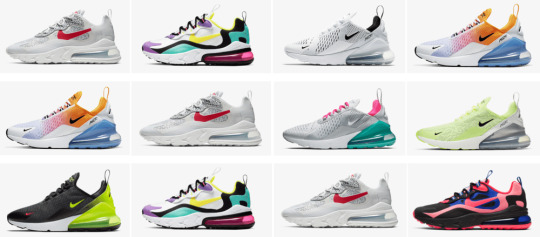
Agilenano - News from Agilenano from shopsnetwork (4 sites) https://agilenano.com/blogs/news/four-lawsuits-corporate-bullying-and-an-alleged-pattern-of-rampant-copying-the-history-of-nike-v
0 notes
Link
A partly open truck loaded with Nike Air Force 1 sneakers and Christian Louboutin shoes reportedly showed up in the Englewood neighborhood of Chicago last week. Local activists say it was a “bait truck” placed by law enforcement to lure would-be thieves to their arrest. The truck was parked near a basketball court and traveled to other sites in the predominantly black community on the city’s southwest side, according to Charles Mckenzie of the crime prevention group God’s Gorillas.
An August 2 video Mckenzie shot captures residents confronting officers about the truck has made the rounds on Facebook, Instagram, Lipstick Alley, and the World Star Hip-Hop site.
Share this
Posted by Charles Mckenzie on Sunday, August 5, 2018
Another video, shot by self-described “crime chaser” Martin G. Johnson, reportedly shows the bait truck at a different location the next day. In both videos, community members accuse officers of trying to set residents up to steal.
[embedded content]
The Chicago field office of the FBI told Vox it would not comment for this story; the Chicago Police Department has not responded to a request for comment. But over the past decade, law enforcement agencies in the US have increasingly turned to bait devices to reduce crime.
These items, be they unattended vehicles or packages, are intended to be stolen. Police typically leave them in high-crime neighborhoods in spots where thieves are most likely to take them. A parked bait car, for instance, would be left in an area where car theft is a problem. Bait devices are rigged with surveillance equipment and tracking devices so that authorities, usually waiting nearby, can quickly catch offenders who make off with them.
But as the Black Lives Matter movement has drawn widespread attention to anti-black policing and the disproportionate amount of African Americans in prison, reports of a bait truck in an impoverished community of color have predictably sparked outcry. The Englewood residents seen in video footage regarded it as another hostile act by law enforcement instead of a bid to cut down on crime. Moreover, the placement of the alleged bait truck near a basketball court filled with kids signaled, to some, a ploy to ensnare vulnerable youth in the criminal justice system rather than career criminals.
“There were a lot of young guys playing basketball,” according to Mckenzie, who said he spotted the bait truck while driving nearby. “Why would they do that in the poorest communities to people who don’t have anything better?”
Mckenzie said that many Englewood residents have nothing to lose, making the temptation of unattended pairs of expensive shoes too great for many to resist. Englewood’s poverty rate is at least 40 percent, by some estimates, and more than 60 percent, according to others. While the community is known as a high-crime area, in 2017 shootings and homicides in the neighborhood dropped by 44 percent and 45 percent, respectively, the Chicago Tribune reported. Car theft also went down.
Mckenzie, 29, said that he had never before seen a bait truck in Englewood. But as cargo theft across the country becomes a growing problem, law enforcement agencies have used bait to catch thieves. Although they might reduce crime, critics wonder if “sting trailers” are simply creating crime, turning tempted bystanders who wouldn’t ordinarily steal into offenders.
Reports of bait trucks in Englewood might be rare enough to generate community outrage, but police have used bait devices there previously. An unsuccessful police operation using a bait car in Englewood even ended up on the since-canceled TruTV reality show Bait Car in 2012. Police may leave bait cars unlocked, place the keys inside, or packages inside to make them more alluring to thieves.
In the Bait Car episode that took place in Englewood, the car itself was the bait, but the theives ended up taking the police surveillance equipment in the trunk rather than the vehicle. They managed to escape before the authorities could apprehend them.
In 2008, the Chicago Police Department made headlines for using a bait car to cut down on auto theft in high-crime areas. The city is not alone. Dallas police use bait cars to reduce auto theft, and Philadelphia-area police have used bait cars for several years, too. In San Francisco, authorities use bait bicycles to deter bike thieves. Bait bikes have GPS tracking devices and are positioned in areas where they’re likely to be stolen. Authorities in other cities have used trucks, rigged with monitoring devices, to make bait out of UPS boxes, handbags, sneakers, food, beverages, and electronics.
San Francisco’s bait bike program was implemented to reduce bicycle theft in the city. Justin Sullivan/Getty Images
The FBI reports that about $27 million in property was taken as a result of cargo theft in 2016, the most recent year for which data is available. The federal agency defines cargo theft as the criminal taking of “goods, chattels, money, or baggage” included as part of a commercial shipment. Cargo is a wide category and can include an eclectic mix of goods — such as cars, bicycles, alcohol, apparel, food, livestock, drugs, electronics, and general merchandise. More than $732,734 of goods the FBI broadly categorized as “merchandise” was taken in cargo theft incidents in 2016, and more than $390,000 of apparel-related cargo was stolen.
The FBI’s Uniform Crime Reporting Program only began collecting data on cargo theft in 2012. The agency reports that cargo theft is on the rise and offenses may even pose a threat to national security. “Often cargo theft offenses are part of larger criminal schemes and have been found to be components of organized crime rings, drug trafficking, and funding for terrorism,” according to the FBI.
But the use of bait devices raises civil liberties concerns. In 2015, ACLU senior policy analyst Jay Stanley described to Mic how and why bait devices are supposed to be used.
“The basic criteria should be if police are trying to catch crime happening on its own, or are they trying to create crime where it otherwise wouldn’t happen,” Stanley said. “I don’t think a bait object — if used in the way everyone imagines it’s used, which is to catch a thief — is a civil liberties problem.”
Mckenzie, however, fears that bait operations could lead to the arrest of people without criminal records. He said that he watched officers arrest two people who attempted to steal from the bait truck last week. Their arrests and his belief that some shoes in the truck cost hundreds of dollars alarmed him.
“Anything over $500 is a felony, and they’re going to get some guys who don’t [already] have a felony and charge them,” he said.
The value of stolen property determines if a theft is a felony or misdemeanor. States establish their own thresholds for what constitutes felony theft. Illinois sets the bar for felony theft at $500, a conviction that can lead to a prison sentence of up to five years.
Entrapment law allows defendants who took bait to claim that the government turned them into criminals instead of merely giving them the opportunity to commit a crime. But in the 2015 Harvard Law Review article “Bait, Mask, and Ruse: Technology and Police Deception,” Elizabeth E. Joh, a law professor at the University of California Davis, said that the entrapment excuse usually isn’t successful.
“In practice, entrapment is a losing defense,” Joh argued. “For most courts, the conclusion that a defendant is criminally predisposed to commit the offense bars an entrapment claim even where the government’s temptations may be unrealistically attractive.”
A Fairfax County, Virginia, police officer sits in a bait car rigged to catch auto thieves. Tom Jackman/Washington Post/Getty Images
Bait devices not only raise questions about entrapment but safety concerns as well. Police can disable a bait car if a suspect attempts to drive away in one. But last year, a Dallas police bait car kept going when a suspect stole it. This led to a car chase that ended in police shooting the perpetrator, leaving him in critical condition. Without the bait car, neither the chase nor the shooting would have occurred. The police department temporarily halted its bait car program after the incident but resumed it soon afterward.
Vox has not yet identified the law enforcement agency responsible for placing an alleged bait truck in Chicago’s Englewood neighborhood. Both local and federal law enforcement agencies use bait devices, and Mckenzie told Vox that some of the officers confronted in the video said they worked for the federal government.
Whether local law enforcement agencies or their federal counterparts engage in bait stings, the potential to erode public confidence in policing exists, Joh asserted in her article “Bait, Mask, and Ruse.” She said the problem is that more often than not, such operations don’t target specific individuals but “amount to generalized ‘fishing’: attempts to find out if anyone will be tempted by the proper enticement,” she wrote. “Police are not bound by probable cause or reasonable suspicion requirements before they engage in a sting.”
Mckenzie, an ex-gang member who’s participated in anti-violence groups, predicts that the alleged bait truck in Englewood will harm community-police relations. He doesn’t view all police officers negatively, he said, but using sting trailers gives the impression that the authorities are there to hurt the community rather than help.
“How do we supposed to trust [police] if they setting us up like this?” Mckenzie asked. “How can we trust them?”
Original Source -> Video: Police allegedly left a “bait truck” filled with Nike shoes in a black Chicago neighborhood
via The Conservative Brief
0 notes
Text
SO HYPED to say that there is less than 1 week until the 13th annual SONIC BLOOM! Finding & falling in love at, making friends, learning, growing, and working for SONIC BLOOM has absolutely been one of the greatest challenges yet most fulfilling joys in my life so far. 2018 will be my 6th year in a row at the festival and my second year as OFFICAL PROMO TEAM STAFF! I will be at the festival creating the INSTAGRAM STORY for the weekend. Find me at the festival to get blasted on social media.
As a longtime festival goer, I have a nice list of what I am calling my “Festival Pro Tips” including a couple pieces of advice when it comes to surviving and THRIVING the SONIC BLOOM experience.
It is also important to note, that no matter how hard I attempt to prepare in the best possible way, each festival I go to is truly a unique adventure full of plenty of surprises that can usually neither be planned nor properly packed for in advance. So consider my tips a gentle nudge in the direction of success.
Ultimately how much fun you have a seems to have more to do with your attitude and your willingness to SURRENDER TO THE FLOW & GRACEFULLY BLOOM into each magical moment of the experience.
MANIFESTATION MEDIA’S FESTIVAL PRO TIPS:
#1 – TAKE BUS TO SHOW!
Looking for the best way to get to the festival from the Denver area? Join the party on the way to the party. The Homies at BTS are doing rides from Denver’s Union Station directly to Hummingbird Ranch.
Save Gas. Save Lives. Save Earth.
>>> GRAB A BUS TICKET HERE <<<
#2 – GRAB AN EARLY ENTRY PASS
Arrive early on WEDNESDAY to get the best possible camping spot and settle into your space before the crowd hits to actually enjoy the first day of the festival.
>>> GRAB AN EARLY ENTRY TICKET HERE <<<
#3 – GO VIP
Arrive early and get the best of the best in camping access, beverages, food, a merch package & MORE!
>>> GRAB A VIP TICKET HERE <<<
#4 – VISIT THE OASIS BATH HOUSE
Plan in advance to take a hot shower and maybe even get a massage before hitting the dance floor Saturday night. In my experience taking the time to refresh and take care of yourself is 100% WORTH IT. Step onto the dance floor feeling INVIGORATED and ready to DANCE ALL NIGHT!
#5 – DOWNLOAD THE FESTIVAL APP & PRINT MULTIPLE DAILY SCHEDULES AT HOME (Attached below)
Keep one schedule at your camp and the other one in your bag or pocket for easy dance floor access.
>>> DOWNLOAD APP HERE <<<
#6 – BRING A HEADLAMP/FLASHLIGHT + EXTRA BATTERIES
While the primary festival areas will be lighted by an amazing glow of magical art installations, stage lighting, and bright generator powered lighting, the porta potties and the late night/early morning walk back to your campsite could be dark and treacherous. The festival is held on a ranch in the “Rocky Mountains” therefore is rocky and rugged terrain. TAKE IT SLOW and BRING A FLASHLIGHT to avoid dangerous travel and scary potty situations.
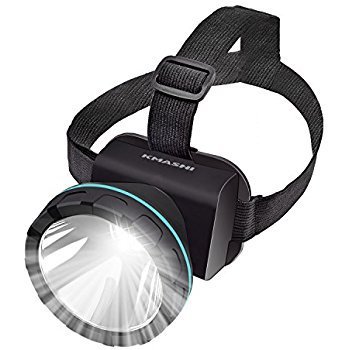
#7 – BRING A RE-USABLE WATER CONTAINER & DRINK LOTS OF WATER
Colorado’s hot and dry climate + high elevation is a recipe for dehydration if you are not fully aware of your water intake. Water is free and available at various locations throughout the festival site so take full advantage and drink as much as you can. If you are concerned about the quality of the water (as many are) consider grabbing a bottle with a filter built into it. Another idea to consider is to bring a refillable 1-5 gallon jug to keep back at camp so you don’t always have to go to the water stations for a refill.
#8 – BRING QUALITY CAMPING AND OUTDOOR PROTECTION – DOUBLE CHECK ALL CAMPING GEAR BEFORE YOU ARRIVE.
Make sure you don’t forget things like stakes for your tent as high wind conditions may exist and you 100% DO NEED to fully stake down all tents. Camping gear that is in good shape, Sunblock + Aloe Vera Gel, Hats, Tarps, Raincoats, comfortable Sneakers AND/OR Boots, Sandals and so many more things should be considered when packing for a multiple-day adventure at Hummingbird Ranch.
>>> REVIEW THIS CAMPING CHECKLIST OF IMPORTANT ITEMS TO BRING!<<
#9 – READ BOTH THE HEALTH & SAFETY TIPS AND THE FAQ’S ON SONIC BLOOM WEBSITE!
#10 – FOLLOW THE RULES!
Everybody comes to SONIC BLOOM to have a great time, so do your part by following these simple guidelines to ensure your experience is as good as it possibly can be. KEY ITEMS HERE – NO GLASS, NO WEAPONS, & NO PETS!
#11 – BRING CASH & KEEP IT SAFE ON YOUR PERSON!
There will not be an ATM at the Box Office so you will need to be 100% prepared prior to arrival on site with your tickets. The ATM that does exist inside the festival is expensive and not always realiable in terms of being a great solution for getting cash. I highly recommend grabbing the cash you need prior to arrival and keeping it on your person.
#12- LEAVE YOUR PRIZED VALUABLES AT HOME & ONLY PACK IN & OUT WHAT YOU REALLY NEED!!!
I would NEVER RECOMMEND that you leave any type of valuables at your tent or campsite. Unfortunately every year people get robbed at the festival. It breaks my heart that people among us that would steal but the truth is the truth. Keep your campsite clean and tidy by only bringing what you really need to the festival. Keep expensive yet necessary items on your person and leave all other valuables locked in your car or at home. This year we also have LOCKERS available so if you don’t have a way to lock your stuff please consider this as a solution.
>>> RESERVE A LOCKER HERE <<<
MANIFESTATION MEDIA’S TOP SEVEN MUSIC ACTS TO SEE AT SONIC BLOOM 2018
#1 – SONIC BLOOM ORCHESTRA
The SONIC BLOOM Orchestra is one of our favorite features each year! We can’t wait to see the magic that @dirtwire #Zilla, @toubabkrewe, @kaminanda and members of @sunsquabi, @papadosio & MORE create together under the Colorado skies!
SUNDAY ON THE BLOOM STAGE 1-2AM
#2 – YAIMA
I am very excited to see one of my favorite groups in the world, Seattle based, Yaima, at this year’s bloom! This incredible medicine music duo has been amazing to heal too and watch transform over the last few years since I met them one night at Cervantes when they opened for The Human Experience. I am so elated they were finally booked for SONIC BLOOM. So much love to Pepper Proud for being an amazing friend and supporter of Manifestation Media over the last few years.
FRIDAY 8-9:15PM ON THE HUMMINGBIRD STAGE
#3 – VIBESQUAD
Don’t miss VibeSquad’s ONLY COLORADO performance of 2018. After learning through his recent video post WHY HE STOPPED DOING VIBESQUAD I am incredibly inspired to support this longtime SONIC BLOOM artist as he continues to share his love for live music production exclusively with our community.
SATURDAY 8:15-9:30 ON THE BLOOM STAGE
#4 – Maddy O’Neal
A local Colorado “lady of the moment” this set is one of my MUST SEE’s as I have truly enjoyed watching Maddy’s career evolve past prior collaboration “Krooked Drivers” and I love her fresh solo sounds. Let this uplifting hip-hop infusion of oldskool tracks with light and lifted electronic beats surprise and delight you.
FRIDAY 9:30-10:45 ON THE HUMMINBIRD STAGE (right after YAIMA)
#5 – LIQUID STRANGER
Are you ready to let the “Weird & Wonderful” sounds of liquid’s “freeform bass” rock your world? I know I sure am. This one may just be one of the most anticipated of the festival and as the Thursday night headliner, I anticipate that it should set a great tone for the rest of the weekend at Hummingbird Ranch.
THURSDAY 12:45-2AM ON THE BLOOM STAGE
#6 – DIGITAL ETHOS
Have you guys listened to his Beat Lab Radio 127 kick of show SoundCloud mix? I have had this on repeat for like a year now so this one is purely based on hoping that his SONIC BLOOM set is similar in magic to this SoundCloud mix.
SUNDAY 8:15-9:15PM ON THE MEADOW STAGE
#7 – JADE CICADA
I had the pleasure of meeting Jade Cicada & his management team in Nashville, TN last August as a muggy rain began to fall outside of the War Memorial Auditorium at the 1st ever “Deep Tropics” EDM festival that I worked as the VIP coordinator at. I remember talking to the crew about SONIC BLOOM and dreaming together that he would get to play at the festival this year. While I wasn’t “really” involved in his being booked for this year’s bloom I do feel like it was that rainy night in Nashville that we put the idea out to the universe that I wanted him to make his debut at bloom this year AND SO IT IS. THE MAGIC OF MANIFESTATION IS REAL! Just simply ASK the universe for what you want and watch the magic unfold before your very eyes.
FRIDAY 12-1:15AM ON THE HUMMINGBIRD STAGE
You can preview the rest of this year’s stellar music lineup from talent from around the world here!
LIVE PAINTERS
CLICK THIS LINK TO SEE THE FULL LINEUP FOR ALL OF THE AMAZING ARTIST AND COLLABORATORS COMING TO THE FESTIVAL THIS YEAR!
This slideshow requires JavaScript.
WORKSHOPS, YOGA, & PERMACULTURE SCHEDULE
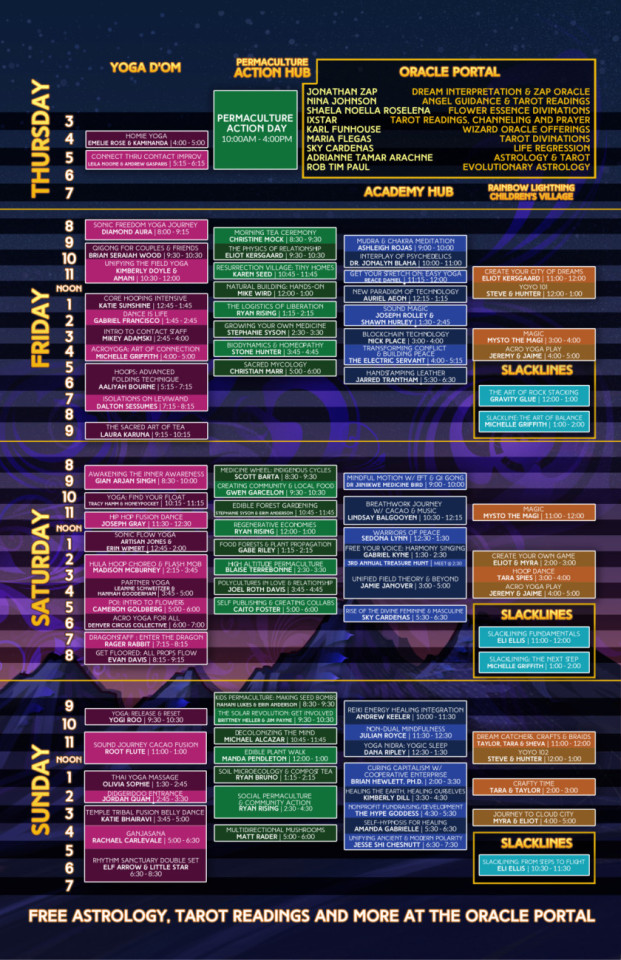
MUSIC SCHEDULE
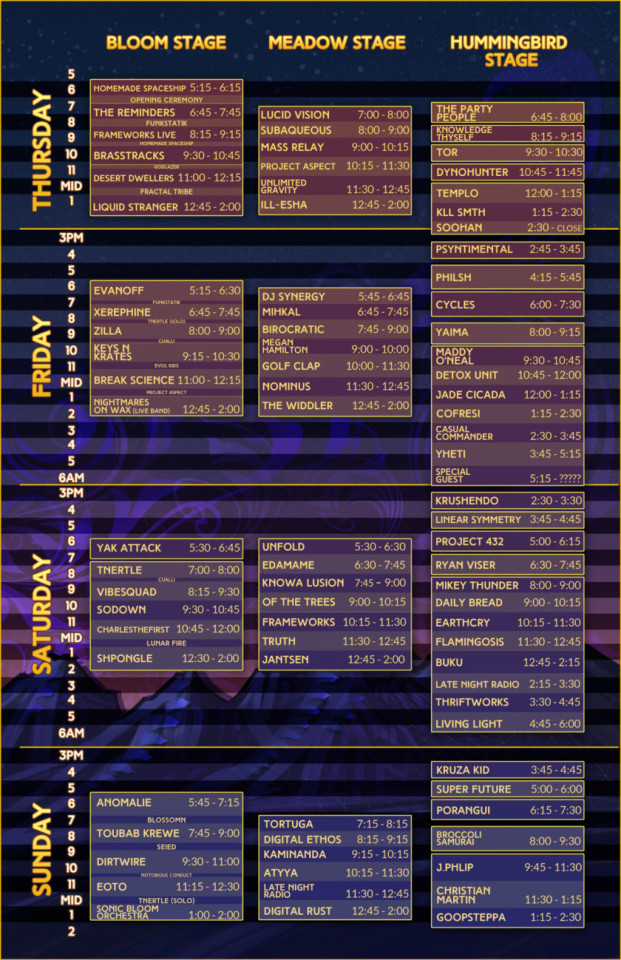
PERMACULTURE SCHEDULE
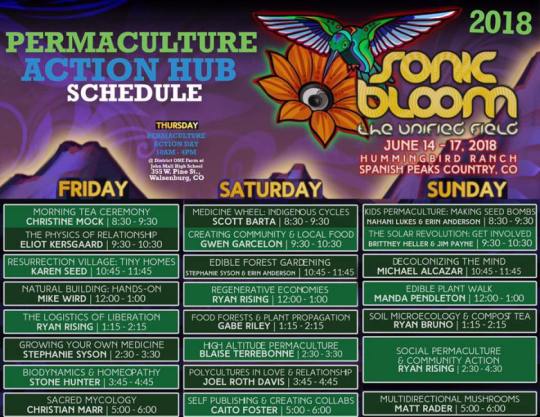
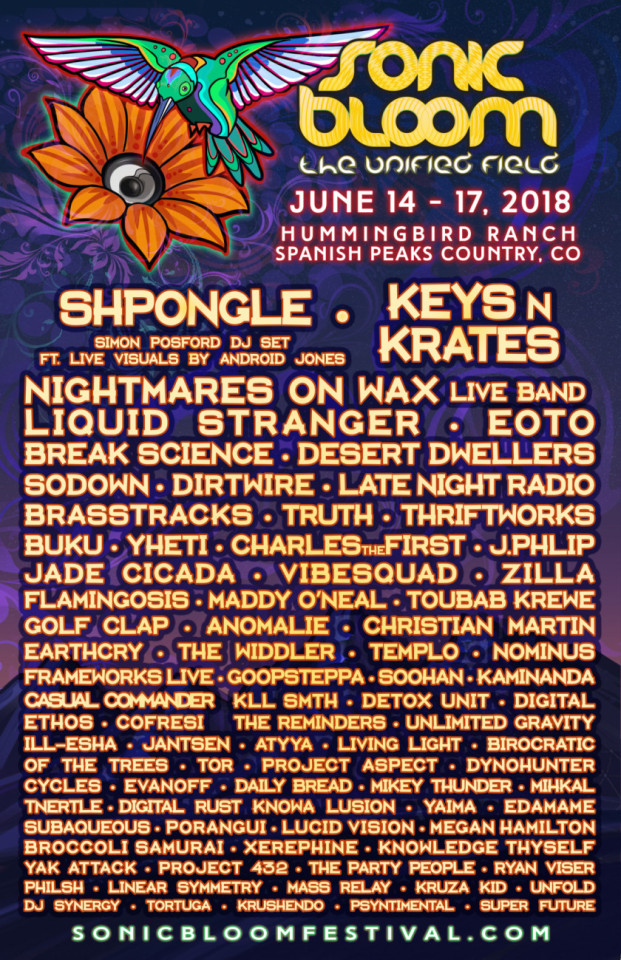
GET CONNECTED:
JOIN THE SONIC BLOOM MUSIC FESTIVAL COMMUNITY GROUP
TICKETS & INFO: sonicbloomfestival.com FACEBOOK: facebook.com/sonicbloom RSVP:http://bit.ly/sbloom2018 APPS: http://bit.ly/2is3dGv TWITTER: twitter.com/sonic_bloom INSTAGRAM: instagram.com/sonic_bloom_ YOUTUBE: youtube.com/user/sonicbloomfestival SPOTIFY: play.spotify.com/user/sonicbloomfestival SOUNDCLOUD: soundcloud.com/sonicbloomfestival
Manifestation Media’s SONIC BLOOM 2018 Festival Pro Tips + TOP 7 MUST SEE MUSIC ACTS + Full Festival Lineup & Schedule! SO HYPED to say that there is less than 1 week until the 13th annual SONIC BLOOM…
#android jones#Art Gallery#break science#Buku#CharlesTheFirst#COLORADO#Desert Dwellers#Dirtwire#Electronic music#entertainment#EOTO#Events#festival season#Festivals#Glassy Mermaid#Hummingbird Ranch#Jade Cicada#Keys & Krates#Liquid Stranger#Live Glassblowing#Live Music#Maddy O&039;Neal#Music Fest#nature#Nightmares On Wax#PARTY#Shpongle#sonic bloom#SONIC BLOOM 2018#Sonic Bloom Music Festival
0 notes
Text
Agilenano - News: Four Lawsuits, Corporate "Bullying," and an Alleged Pattern of Rampant Copying: The History of Nike v. Skechers

image: TFL
In the $62.5 billion-plus global sneaker market, the competition is fierce, the costs associated with the intensive research and development that goes into designing and manufacturing footwear are high, and the revenues that can be generated from single styles collections can race past the $1 billion mark for standouts like Nikes Flyknits or adidas Stan Smithand the Superstar models. This means that the stakes are high amongst the markets key players, and the chance that litigation will come into play among them is even higher.
Nike and adidas have long made headlines in connection with their history of legal battles, centering on their respective knitted technologies, for instance, which spawned an international battle beginning at the very same time as he London Olympics in 2012, and while there is likely no end in sight to the fights they wage against one another in their quest to outfit consumers across the globe, another rivalry has been spilling over into the courts: Nike versus Skechers.
In the lawsuit that it filed against Skechers in a federal court in California in September, Nike told the judge that the case was not the first of its kind, just as it was not the first time Skechers has infringed its intellectual property rights. Accusing Skechers of copying a number of its sneaker designs and thereby, infringing two of its utility patents, counsel for Nike declared that the case is actually the fourth in a series of lawsuits that Nike, and its subsidiary Converse Inc., have filed against Skechers asserting a range of intellectual property rights.
In filing suit against Skechers this fall, Nike has escalated another relatively recently-initiated fight against its Southern California-based rival, and added yet another matter to a larger and clearly still growing list of proceedings that Nike has said stem from Skechers larger pattern of allegedly copying its competitors designs and using innovative technologies developed by others to gain market share instead of innovating its own designs and technologies.
In Skechers mind, Nikes latest litigation was the latest attempt by the $150 billion-plus sportswear giant to stifle competition and bully its rivals. This is what Skechers asserted in an open letter that it posted to social media in the fall of 2019.
A timeline of their respective lawsuits and other legal proceedings is as follows
October 2014
Nike-owned Converse sued Skechers (and 30 or so other companies, including New Balance, Walmart and Ralph Lauren, among others, in individual cases) in federal court in Brooklyn, New York in which it sought injunctive relief and monetary damages and in an International Trade Commission (ITC) proceeding, seeking an order barring the defendants from importing the allegedly infringing footwear into the U.S.
In both sets of cases, Converse alleged that the more than 2 dozen companies, including Skechers, were mass-producing, distributing or selling sneakers that knock off the look of [its] iconic Chuck Taylor, thereby running afoul of its trademark rights. As for Skechers, adidas claimed that the companys Twinkle Toes and BOBS designs infringed its trademark or more specifically, its trade dress rights in various elements that make up the design of its famed Chuck Taylor sneakers, from its distinctive toe caps and toe bumpers to its striped midsoles.
While the majority of the footwear companies on the opposite end of adidas civil suits and the ITC proceeding have settled quietly, the matters against Skechers are still underway.
January 2016

Nike knitted sneaker (left) & Skechers knitted sneaker (right)
In the patent infringement suit that it filed in federal court in Portland, Oregon in early 2016, Nike asserted that a number of Skechers footwear including its Burst, Womens Flex Appeal, Mens Flex Advantage, Girls Skech Appeal, and Boys Flex Advantage shoe styles infringe at least eight of its Flyknit-specific design patents given that the "overall appearance of the designs of the Nike patents and the corresponding designs of Skechers' infringing shoes are substantially the same.
According to its 14-page complaint, which was supplemented with nearly 200 pages of exhibits, counsel for Nike alleged that Skechers intended to copy the designs covered by [its] patents and did so to the point that an ordinary observer would will perceive the design of the two parties respective shoes to be the same. To prove its point, Nike cited an article from menswear site Complex, which describes the Skechers Burst shoes as having ripped off Nikes Flyknit design.
That case, which was transferred from a federal district court in Oregon to the U.S. District Court for the Central District of California in November 2017, is still underway, with Skechers filing its answer, as well as counterclaims of its own, early this year, asking the court to declare that it did not infringe Nikes patents, and to declare that 12 of Nikes patents are invalid for failing to comply with the patent law provisions of the Patent Act.
April and May 2016
In the wake of Nikes design patent infringement lawsuit, Skechers retaliated against the Beaverton-based sportswear giant by filing inter partes review (IPR) petitions with the U.S. Patent Trial and Appeal Board (PTAB) in order to invalidate the eight design patents that Nike claims Skechers infringed in the aforementioned lawsuit. The basis for these filings? The individual patents do not meet the requirements for patentability (i.e., the inventions are not novel and/or non-obviousness).
In September and November 2016, the PTAB which has the ability to refuse to institute an IPR proceeding if it finds that the challengers request lacks substantive merit denied each of Skechers petitions, including one that pointed to Italian fashion brand Missonis zig-zag print designs, which date back to the 1950s, as existing long before Nike created its Flyknit designs and filed its corresponding patent applications, making it so that Nikes knit-centric creations are not all that novel. (Novelty is a critical requirement for patent protection).
January 2017
Skechers filed several additional IPR petitions, including ones challenging Nikes design patent-protected knitted shoe uppers.
This time around, while the PTAB again refused the majority of Skechers petitions, it agreed to consider two of them, both of focused on the validity of Nikes design patents for sneaker soles (D723,781 and D723,783). Skechers claimed that the two shoe sole patents were invalid because they were obvious as a result of Nikes own prior filings, including a European Community Design registration and two previously-filed utility patent applications. In June 2018, a 3-judge panel for the PTAB rejected Skechers invalidity challenges and upheld the validity of Nikes patents.
September 2019

In a design patent infringement complaint filed in the fall, Nike upped the ante on the parties existing fight, and called foul on Skechers continued practice of allegedly manufacturing Skecherized versions of Nike sneakers, including blatant replicas of itsVaporMax and Air Max 270 designs,paying specific attention to its rivals alleged hijacking of its Air Sole technology, which Nike says that it spent decades creating.
According to its 37-page complaint, which was filed on September 30 in the U.S. District Court for the Central District of California, Nike alleges that in selling its Skech-Air Atlas, Skech-Air 92, Skech-Air Stratus, and the Skech-Air Blast models, among others, Skechers has made, used, offered for sale, sold, and/or imported into the U.S. shoes that have the same overall appearance [as those protected by its] VaporMax patents, and that infringe the some of the patents it holds for its Air Max 270 designs.
Skechers allegedly infringing sneakers are substantially the same as Nikes patent-protected sneakers, the footwear titan asserts, so much so that an ordinary observer will perceive the overall appearance of the VaporMax [and the Air Max 270] shoes and the corresponding designs of the [Skechers] shoes to be virtually the same.
In its January 7, 2020 response to Nikes suit, Skechers denies that it has infringed Nikes patents and asserts that even if it did, Nikes patents are invalid, and thus, unenforceable. In counterclaims of its own, Skechers is seeking a formal judgment from the court declaring that the patents that Nike cites in its complaint are invalid and that it has not infringed the patents at issue.
October 2019
In a separate patent lawsuit that it filed against Skechers just weeks later, Nike claims that Skechers is also on the hook for infringing two of itsutility patents. According to Nike, SkechersSkech-Air Jumpin Dots and Skech-Air Mega shoes infringe claims contained in two of its utility patents one that protects an article of footwear with an emphasis on the cushioning cavity that exists in the midsole of the shoe (Patent No. 10,098,412), and another that covers the sole component [of a sneaker] and a method of manufacturing the sole component (Patent No. 7,401,420).
Without Nikes authorization, Skechers has made, used, offered for sale, sold, and/or imported into the U.S. shoes that infringe a number of claims protected by the 412 and 420 patents, according to Nike, as they include the same sole structure incorporating a fluid-filled bladder and a reinforcing structure secured to the bladder, a cavity disposed between the upper and the outsole, and a plurality of protrusions [that] progressively decrease in height from the first protrusion to the forward-most edge of the article of footwear, among other things.
Agilenano - News from Agilenano from shopsnetwork (4 sites) https://agilenano.com/blogs/news/four-lawsuits-corporate-bullying-and-an-alleged-pattern-of-rampant-copying-the-history-of-nike-v-skechers
0 notes